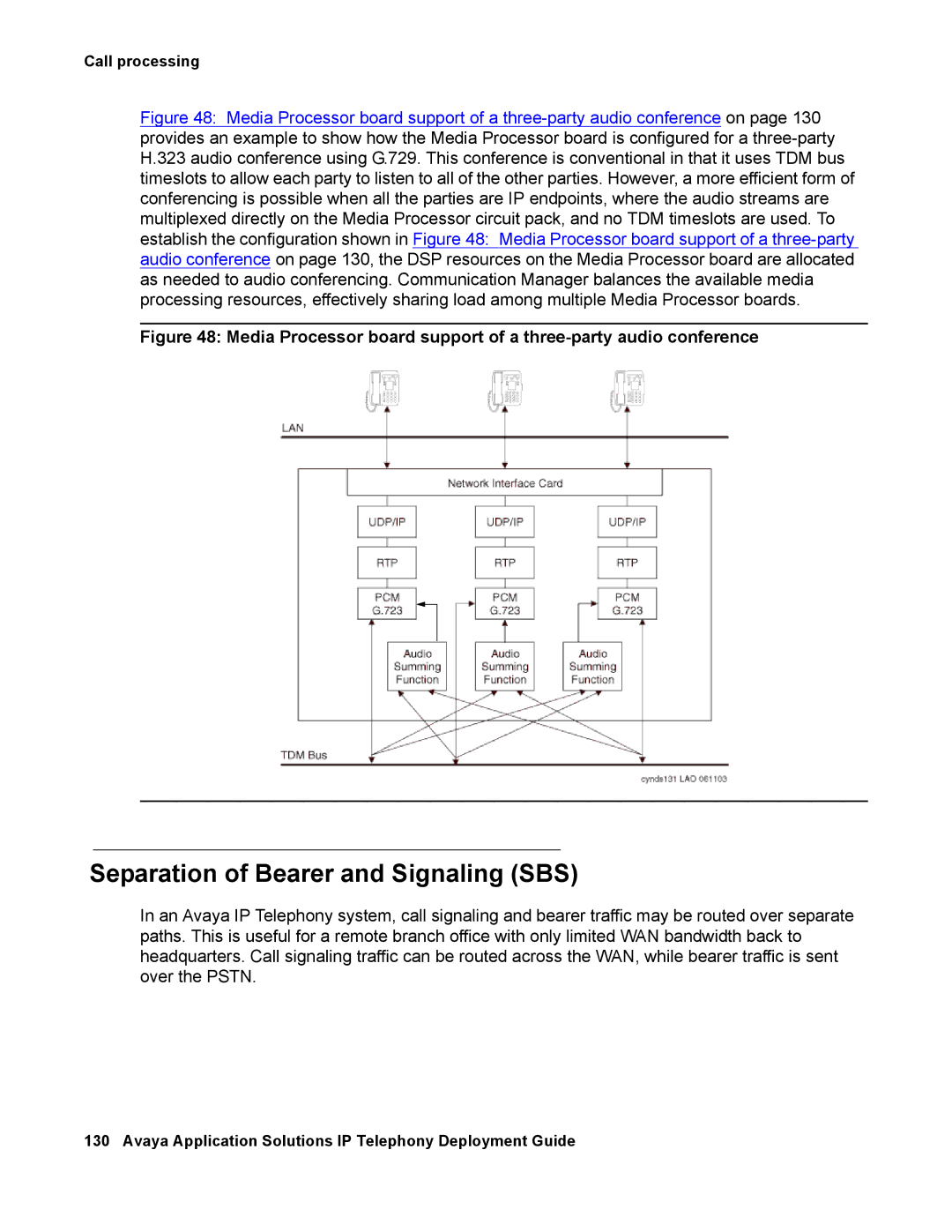
Call processing
Figure 48: Media Processor board support of a three-party audio conference on page 130 provides an example to show how the Media Processor board is configured for a three-party H.323 audio conference using G.729. This conference is conventional in that it uses TDM bus timeslots to allow each party to listen to all of the other parties. However, a more efficient form of conferencing is possible when all the parties are IP endpoints, where the audio streams are multiplexed directly on the Media Processor circuit pack, and no TDM timeslots are used. To establish the configuration shown in Figure 48: Media Processor board support of a three-party audio conference on page 130, the DSP resources on the Media Processor board are allocated as needed to audio conferencing. Communication Manager balances the available media processing resources, effectively sharing load among multiple Media Processor boards.
Figure 48: Media Processor board support of a three-party audio conference
Separation of Bearer and Signaling (SBS)
In an Avaya IP Telephony system, call signaling and bearer traffic may be routed over separate paths. This is useful for a remote branch office with only limited WAN bandwidth back to headquarters. Call signaling traffic can be routed across the WAN, while bearer traffic is sent over the PSTN.
